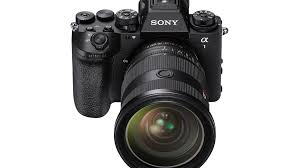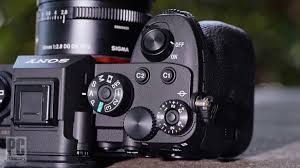Sony has officially announced the Alpha A1 II, its latest flagship camera, and it comes with a twist. While the A1 II continues to showcase cutting-edge capabilities befitting a premium model, Sony has surprised enthusiasts by incorporating several features initially debuted in its more affordable cameras. This strategy underscores Sony’s focus on refining its camera ecosystem while providing a seamless experience for professionals and advanced hobbyists alike.

A Flagship Reimagined
The Alpha A1 II builds on the success of its predecessor, the Sony Alpha A1, renowned for its exceptional speed, resolution, and versatility. This new iteration retains the hallmark specs that make it a powerhouse for photographers and videographers, including its 50.1-megapixel full-frame sensor, 8K video recording, and 30 fps burst shooting. However, it introduces refinements inspired by lessons learned from Sony’s lower-tier models, such as the Alpha A7 IV and ZV-E1.
These “trickle-up” features include enhanced autofocus algorithms, improved user interface designs, and upgraded computational imaging technologies. This blending of features from across Sony’s lineup allows the A1 II to deliver an even more polished and adaptable experience.
Autofocus Gets a Major Boost
One of the most notable upgrades in the A1 II is its autofocus system, which integrates advanced algorithms first seen in Sony’s mid-range cameras. The AI-based autofocus now boasts better subject detection, recognizing a wider variety of objects, including animals, birds, vehicles, and even insects. This enhancement, derived from the Alpha A7R V, ensures precise tracking even in challenging scenarios.
Moreover, the Real-Time Eye AF has been further refined to work seamlessly during high-speed shooting and video recording. The A1 II is capable of locking focus on a subject’s eyes with remarkable accuracy, even at burst rates of 30 fps, making it ideal for sports and wildlife photography.
Video Recording – More Than Just Resolution
While the A1 II retains the ability to shoot 8K video at 30 fps and 4K at 120 fps, Sony has borrowed features from its video-focused cameras to enhance usability. The addition of S-Cinetone color profiles, first introduced in the FX lineup, brings cinematic-quality visuals directly to the A1 II. This feature simplifies post-production, allowing creators to achieve professional-grade results without extensive color grading.
The A1 II also incorporates advanced heat dissipation technology from the ZV-E1, ensuring longer recording times without overheating. With support for 16-bit RAW output via HDMI and in-camera LUT previews, the A1 II is a compelling choice for filmmakers and hybrid shooters.
Connectivity and Usability
Sony has made significant strides in improving the usability of the A1 II by adopting ergonomic and software enhancements from its recent models. The touchscreen interface is more intuitive, mirroring the Alpha A7 IV’s simplified menu system. The camera also offers dual CFexpress Type A card slots, ensuring fast write speeds for high-resolution images and 8K footage.
On the connectivity front, the A1 II includes Wi-Fi 6E and USB-C 3.2 for faster file transfers. For remote shooting, the camera integrates seamlessly with Sony’s Creators’ Cloud, allowing photographers to upload and edit files directly in the cloud.
Borrowed Innovations: The Strategic Advantage
Sony’s decision to integrate features from its less expensive models reflects a strategic shift in product design. By testing new technologies in mid-range cameras before introducing them in flagships, Sony ensures that these features are reliable and refined. This approach not only enhances the overall user experience but also creates a sense of familiarity for those upgrading within the Sony ecosystem.
For instance, the breathing compensation feature, introduced in the A7 IV to address focus breathing during video recording, makes its way to the A1 II, further cementing its status as a hybrid camera. Similarly, the dedicated AI processing unit, which debuted in the A7R V, plays a key role in the A1 II’s advanced computational capabilities.
Pricing and Availability
Sony has positioned the Alpha A1 II as its flagship offering, with a price tag that reflects its premium status. At $6,500, the A1 II is aimed squarely at professionals who require the best tools for their craft. The camera is set to hit shelves in early 2025, giving potential buyers ample time to consider how it fits into their workflow.
The Sony Alpha A1 II redefines what a flagship camera can be by combining the best of its predecessors with proven innovations from its broader lineup. Whether you’re a professional photographer, a videographer, or a hybrid creator, the A1 II delivers a versatile and powerful solution that meets the demands of modern content creation.
By borrowing features from its affordable counterparts, Sony demonstrates that innovation is not limited to flagships—it’s a continuous process that elevates the entire ecosystem. With the A1 II, Sony once again sets the standard for performance, adaptability, and creativity in the world of photography and videography.










Add Comment